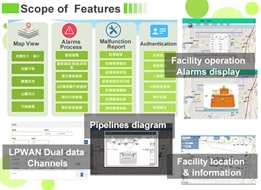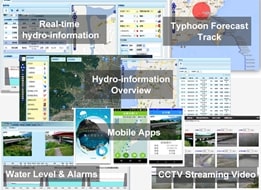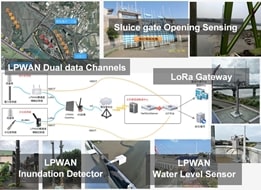Geographic Information System
GIS is a framework for gathering, managing, and analyzing data. Rooted in the science of geography, it integrates many types of data. For example, it analyzes spatial locations and organizes layers of information into visualized maps or 3D scenes. In addition, GIS reveals deeper insights into data, such as patterns, relationships, and situations—assisting users for making critical decisions. WaveGIS has developed web-GIS solutions including spatial databases, map caches and map servers to provide additional integrated and distributed applications.
For more details please contact ryan@wavegis.com.tw
1.Facility management System in Taoyuan International Airport Corporation

The system has integrated electric power facilities and operational information mapping with the GIS of the airport. Thus, the system can provide maintenances and repairs of power operations and trigger alarms for the airport facility management offices.
2.Local Government Flood Warning System

The System integrates geo data, such as rivers, drainages, digital elevation model (DEM) and other demographic, economic, or land usage datasets including potential inundation maps and real-time water level data, rainfall, streaming videos along the rivers, drainages to provide floods early warnings and analyses of associated impacts.
Other Similar Clients:Keelung City,Yilan County, Chiayi County,Hsinchu City, Changhua County.
IoT enablement platform
IoT platform is also known as a cloud enabled platform or IoT enablement platform to pinpoint its major business value, that empowers open standard devices with cloud-based applications and services. IoT platform is built to turn business concepts into realities. By establishing an extendable software framework to cope with fundamentals and latest industrial standards of data and commands, all the interactions among hardware elements and application layers assist customers to maintain relevant marketplaces and to grow new revenues while gaining competitive advantages of global connectivity and device management.
1.Smart river management in Touqian River.

Diverse IoT devices are connected and managed by implementing flexible connectivity adaptors, enterprise-grade security mechanisms, and broad data processing powers.
IoT platform originates in the form of IoT middleware; the objective was to function as a mediator between the hardware components and application layers. Its primary tasks include:
(a) data collection from devices over various protocols and network topologies;
(b) device configuration, control and management remotely, and
(c) over-the-air firmware updates.